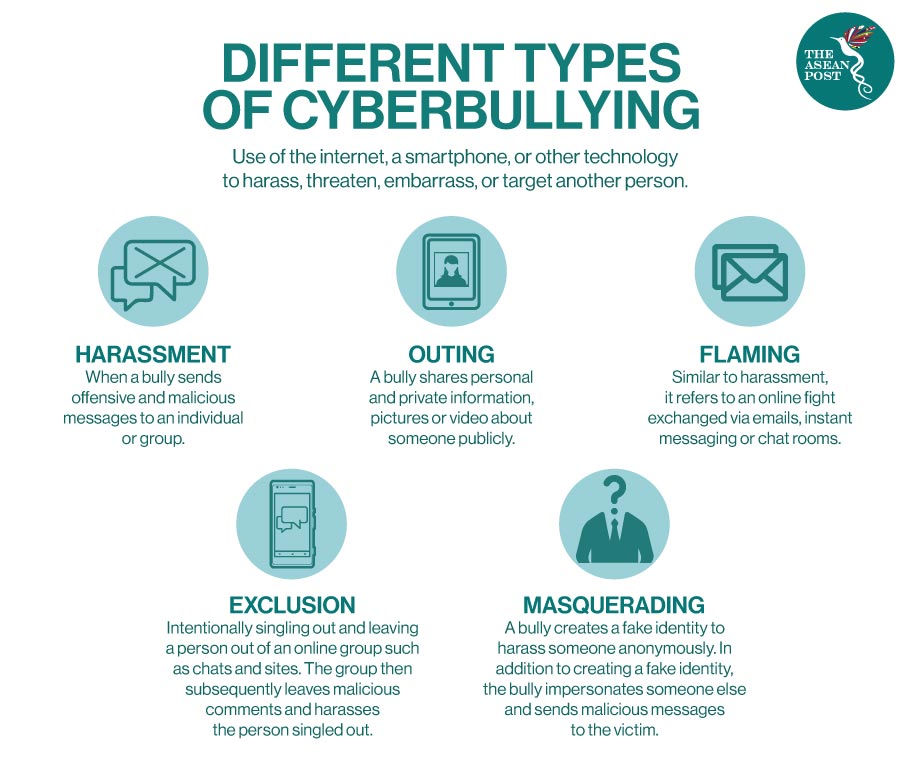Bullying has always been a problem for many people and societies since time immemorial. Now, with the increase of social media usage around the world, bullies have taken to the internet to proceed with their evil deeds.
While technology has improved our lives in general, it does not come without consequences. The internet has allowed individuals to hide behind masks of anonymity to commit online crimes such as fraud, misinformation and cyberbullying.
The United Nations International Children's Emergency Fund (UNICEF) defines cyberbullying as “bullying with the use of digital technologies” and that it can “take place on social media, messaging platforms, gaming platforms and mobile phones. It is repeated behaviour, aimed at scaring, angering or shaming those who are targeted.”
According to media reports, social media sites and apps are the most common digital forms of cyberbullying other than text messages and online video games. Ditch the Label, an anti-bullying organisation conducted a study in collaboration with schools and colleges in the United Kingdom (UK) and found that Instagram is a social media platform that many students had experienced being bullied on.
However, cyberbullying is not only rampant in the UK, but also in other parts of the world. Based on market research company Ipsos’s 2018 survey involving over 20,000 respondents worldwide, it was revealed that Malaysia, Australia and China are among the world’s top countries where parents have reported their children experiencing cyberbullying. The aforementioned ASEAN member state was ranked sixth among 28 countries, and second in Asia behind India.
Another key finding of the Ipsos report also show that nearly one in five parents worldwide said that their child has experienced cyberbullying.
The after-effects of cyberbullying vary from person to person. In a study conducted by telecommunications company Telenor, it was found that 29 percent of the 320 parents interviewed said that being cyberbullied affected their child negatively and that they were “depressed” for a period of time.
However, there have been tragic cases where victims have taken their own lives due to relentless cyberbullying. Back in May, R Thivya Nayagi, a 20-year-old Malaysian allegedly committed suicide after she was inundated by hateful messages left on a viral TikTok video she made with her male colleague.
“Bullycide” or death by suicide due to bullying has been on the rise for the past decade among young people around the world, fuelled by online bullying that accompanies traditional bullying.

Coronavirus Crisis
With the current pandemic, children and youths are online more frequently as they use the internet for distance learning while COVID-19 preventive measures are in place. However, observers say that an increase in harmful online behaviour such as cyberbullying and risky online behaviour have also been identified.
“During the COVID-19 pandemic, and the related school closures, we have seen a rise in violence and hate online – and this includes bullying. Now, as schools begin to reopen, children are expressing their fears about going back to school,” said Audrey Azoulay, director-general of the United Nations Educational, Scientific and Cultural Organisation (UNESCO).
In the Philippines, now more than ever, more people – perhaps even children, have turned to social media for communication, entertainment, news and expressing opinions, among others. According to We Are Social, Facebook is the most used social media platform in the archipelago, with 96 percent of internet users aged 16 to 64 using it in January 2020.
However, Save the Children Philippines said that the increase in time spent by children online exposes them to cyberbullying as well as online sexual abuse and exploitation.
“Taken together, loss of income, movement restrictions for children, isolation, heightened exposure to online platforms, and high levels of stress and anxiety will increase the likelihood of children experiencing online violence,” the organisation stated.
Adult Cyberbullying
Although cyberbullying is typically associated with children and teenagers, adult cyberbullying is real, vicious and happens more often than imagined.
An article by Dr Anuradha Rao, founder of Singapore-based cybersafety company CyberCognizanz discusses the increase of workplace cyberbullying.
“Here, power and gender disparities are exploited by repeated uncivil, aggressive, and inappropriate interactions via technology,” said Rao.
“Outside such formal institutional spaces, social media platforms provide perfect opportunities for cyberbullying and other types of online harassment, such as trolling, stalking, and image-based sexual abuse,” she states.
According to Kantar’s Inclusion Index 2019, it was revealed that 24 percent of employees were bullied in Singapore, the highest among 14 countries surveyed.
Unfortunately, Rao also acknowledges that in some Asian societies, adult cyberbullying has become common and worryingly normalised.
Cyberbullying is increasingly a problem as more people are online, for both children and adults. If you are a victim of cyberbullying, please do not hesitate to reach out and seek for help.
Related Articles:
